Sociology Faculty Books
Youth Street Gangs: A critical appraisal
Routledge, 2015
David C. Brotherton
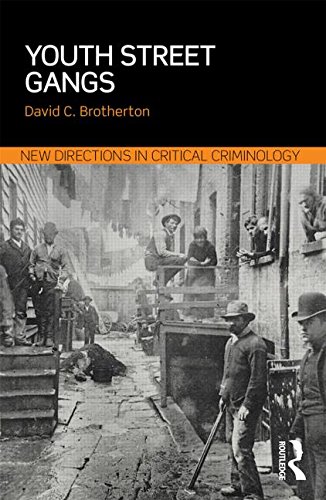
Gangs have been heavily pathologized in the last several decades. In comparison to the pioneering Chicago School work on gangs in the 1920’s we have moved away from a humanistic appraisal of and sensitivity toward the phenomenon and have allowed the gang to become a highly plastic folk devil outside of history. This pathologization of the gang has particularly negative consequences for democracy in an age of punishment, cruelty and coercive social control. This is the central thesis of David Brotherton’s new and highly contentious book on street gangs.
Drawing on a wealth of highly acclaimed original research, Brotherton explores the socially layered practices of street gangs; including community movements, cultural projects and sites of social resistance. The book also critically reviews gang theory and the geographical trajectories of streets gangs from New York and Puerto Rico to Europe, the Caribbean and South America, as well as state-sponsored reactions and the enabling role of orthodox criminology.
In opposition to the dominant gang discourses, Brotherton proposes the development of a critical studies approach to gangs and concludes by making a plea for researchers to engage the gang reflexively, paying attention to the contradictory agency of the gang and what gang members actually tell us. The book is essential reading for academics and students involved in the study of juvenile delinquency, youth studies, deviance, gang studies and cultural criminology.
Click Here for Online Purchase Information
Crime Victims: An Introduction to Victimology (9th Edition)
Cengage Learning, 2015
Andrew Karmen
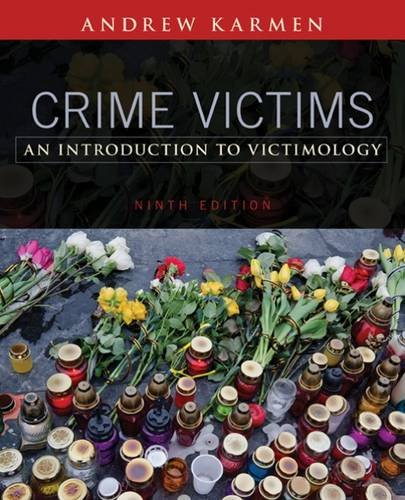
A first in the field when initially published and now a true classic, Crime Victims: An Introduction To Victimology, Ninth Edition, offers the most comprehensive and balanced exploration of victimology available today. The author examines the victims' plight, carefully placing statistics from the FBI's Uniform Crime Report and Bureau of Justice Statistics National Crime Victimization Survey in context. At the same time, he "humanizes" victims' stories through compelling case studies. The text systematically investigates how victims are currently handled by the criminal justice system, analyzes the goals of the victims' rights movement, and discusses what the future is likely to hold. This Ninth Edition presents current coverage of the seriousness of intimate partner violence, child abuse, sexual assaults in the U.S. military, acquaintance rapes on college campuses, shootings on campuses, whether arming for self-protection is an effective strategy, and similar high-profile issues. It also includes new information about "survivorology" and "bystanderology" as well as new material on practical issues facing victims
Click Here for Online Purchase Information
The Development of Criminal and Antisocial Behavior: Theory, Research and Practical Applications
Springer, 2015
Julien Morizot and Lila Kazemian
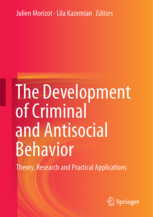
This edited book summarizes the current state of knowledge on the development of criminal and antisocial behavior over the life course. It focuses mainly on the developmental perspective, which has had a paradigmatic influence on current theoretical and empirical works in criminology. With a multidisciplinary perspective, the book reviews: (a) the fundamental concepts of developmental criminology; (b) the risk factors and developmental processes related to the most salient personal (e.g., genetics, personality) and environmental (e.g., family, peers, school) domains explaining the development of criminal and antisocial behavior; (c) the developmental issues related to a number a special themes (e.g., women criminality, street gangs) and (d) the applied and policy implications of research in developmental criminology. In each chapter, prominent researchers from different disciplines such as criminology and psychology summarize the state of knowledge on a specific topic, identify the shortcomings of past research, offer recommendations for future research needs.
Click here for Online Purchase Information
Upscaling Downtown: From Bowery Saloons to Cocktail Bars in New York City
Princeton University Press, 2014
Richard E. Ocejo
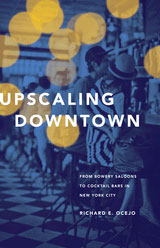
Once known for slum-like conditions in its immigrant and working-class neighborhoods, New York City’s downtown now features luxury housing, chic boutiques and hotels, and, most notably, a vibrant nightlife culture. While a burgeoning bar scene can be viewed as a positive sign of urban transformation, tensions lurk beneath, reflecting the social conflicts within postindustrial cities. Upscaling Downtown examines the perspectives and actions of disparate social groups who have been affected by or played a role in the nightlife of the Lower East Side, East Village, and Bowery. Using the social world of bars as windows into understanding urban development, Richard Ocejo argues that the gentrifying neighborhoods of postindustrial cities are increasingly influenced by upscale commercial projects, causing significant conflicts for the people involved.
Ocejo explores what community institutions, such as neighborhood bars, gain or lose amid gentrification. He considers why residents continue unsuccessfully to protest the arrival of new bars, how new bar owners produce a nightlife culture that attracts visitors rather than locals, and how government actors, including elected officials and the police, regulate and encourage nightlife culture. By focusing on commercial newcomers and the residents who protest local changes, Ocejo illustrates the contested and dynamic process of neighborhood growth.
Delving into the social ecosystem of one emblematic section of Manhattan, Upscaling Downtown sheds fresh light on the tensions and consequences of urban progress.
Click here for Online Purchase Information
Tightrope: A Racial Journey to the Age of Obama
Rutgers University Press, 2014
Gail Garfield
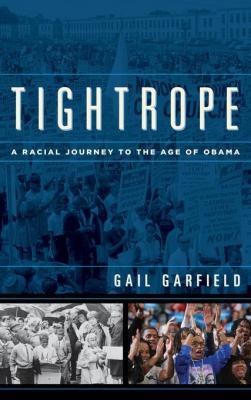
Tightrope: A Racial Journey to the Age of Obama explores race and politics in the United States, addressing racial inequalities and injustices that have led to a point in history where, seemingly improbably, Americans have elected (and re-elected) a black man as president. We, as a nation, have taken precarious steps to arrive at the age of Obama, while remaining steeped in contradictions. Our steps on this racial tightrope are a work in progress—a history in the making—that will largely influence who we are and who we hope to become as Americans.
Gail Garfield retraces our steps along this wavering racial tightrope, weaving in her own experiences, including her childhood in the Jim Crow south, with the nation’s broader racial history to trace the remarkable shift in America’s racial landscape. The divergent steps we have taken, teetering between regressive and progressive racial politics, between stifling continuity and meaningful change, have led us to where we now tread as a nation, in this new Age of Obama. The halting, swaying missteps created by racial fears, hatred, and anger reveal the important imprints of separation and difference, and the bold, assured steps open up possibilities for inclusion, acceptance, and belonging. Tightrope challenges readers to reflect on their own steps on the racial tightrope and to ask basic questions about racial identity and progress in the United States.
Click here for Online Purchase Information
Women, Crime and Criminal Justice: A Global Enquiry
Routledge, 2014
Rosemary Barberet
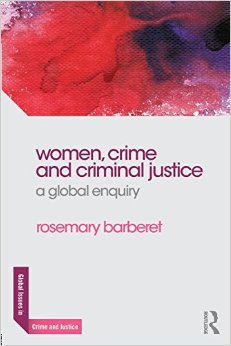
Winner of the Division of International Criminology’s 2014 Distinguished Book Award and the Academy of Criminal Justice Sciences International Section's 2015 Outstanding Book Award
Women, Crime and Criminal Justice is the the first fully internationalized book to focus on women as offenders, victims and justice professionals. It provides background, as well as specialized information that allows readers to comprehend the global forces that shape women and crime; analyze different types of violence against women (in peacetime and in armed conflict); and grasp the challenges faced by women in justice professions such as the police, the judiciary and international peacekeeping. Provocative, highly topical, engaging and written by an expert in the field, this book examines the role of women in crime and criminal justice internationally.
Topics covered include:
- the role of globalization and development in patterns of female offending and victimization,
- how a human rights framework can help explain women´s crime, victimization and the criminal justice response,
- global women’s activism,
- international perspectives on violence against women, including femicide, violence in conflict and post conflict settings, sex work and sex trafficking,
- women’s access to justice, as well as the increased role of women in international criminal justice settings.
This book will be essential reading for those involved in the study of development, human rights, governance, security sector reform, international relations and public health, as debates about these subjects are intrinsically linked to the issues surrounding women, crime and justice. It will also be useful for students taking courses on gender, crime and criminal justice, violence against women, international criminal justice and gender studies.
Click here for Online Purchase Information
Heroin and Music in New York City
Palgrave Macmillan, 2014
Barry Spunt
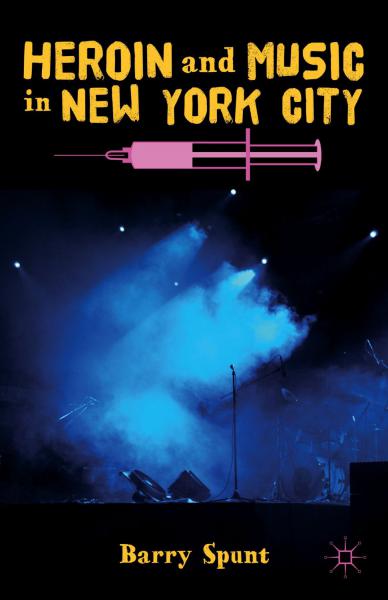
Heroin abuse amongst musicians has never been limited to one genre, but the nature of the connection between heroin and music is not well understood at all. Narrative accounts from a sample of 69 New York City-based musicians and self-acknowledged heroin abusers will address the beginnings of their heroin addictions, it's prevalence amongst artists in certain music genres, and the impact - detrimental or otherwise - heroin has on musicians' playing, creativity, and careers.
"Spunt's study of heroin use amongst New York City's musicians is an exciting academic journey for those who appreciate the merits of qualitative research and especially scholars working in urban ethnography and cultural criminology. Readers will discover that Spunt's groundbreaking study engages the critical academic mind and also the human heart: this book confronts the reader with a vast human tragedy where many of our best musicians have ruined their artistic excellence with heroin." –Thaddeus Muller, Assistant Professor of Criminology, Erasmus University, The Netherlands
"Spunt clearly and comprehensively demonstrates the connection between heroin and music and the need for a better understanding of that nexus." –Henry H. Brownstein, Senior Fellow, University of Chicago, USA
"This work promises to make a unique contribution to the sociological literature on music and drug use. Spunt is eminently qualified to make this statement, having distinguished himself as a veteran ethnographer of the New York City heroin scene. His depiction of New York City heroin-using musicians is simply fascinating, sure to become a classic in the field." –Mark S. Hamm, Professor of Criminology and Criminal Justice, Indiana State University, USA, and author of The Spectacular Few: Prisoner Radicalization and the Evolving Terrorist Threat
Click here for Online Purchase Information
Courting Kids: Inside an Experimental Youth Court
New York University Press, 2013
Carla J. Barrett

This book examines a unique judicial experiment called the Manhattan Youth Part, a specialized criminal court set aside for youth prosecuted as adults in New York City. Focusing on the lives of those coming through and working in the courtroom, Barrett’s ethnography is a study of a microcosm that reflects the costs, challenges, and consequences the “tough on crime” age has had, especially for male youth of color.
“This insightful ethnography tells a compelling story of injustice, humanity, and suffering—of a judge’s struggle to do right despite challenging circumstances—and in the process offers a powerful critique against transfer to criminal court.” –Aaron Kupchik, author of Homeroom Security
"an articulate and intelligent ethnographic study" –Sarah Ciftci, Current Issues in Criminal Justice
"Explores the experiment in child-saving undertaken by the Manhattan Youth Part of the New York criminal court system and considers the insights it offers about the persecution of youth offenders." –Journal of Economic Literature
“An impressive and important book. Meticulously researched and well written the book offers an insightful account of the way one court adapted to the legal effort to try juvenile offenders as adults.” –Austin Sarat, author of Life without Parole
Click Here for Online Purchase Information
Come Out Swinging: The Changing World of Boxing in Gleason's Gym
Princeton University Press, 2013
Lucia Trimbur
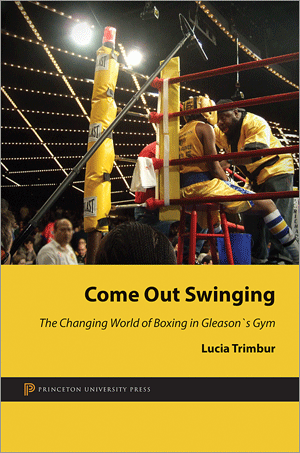
Gleason's Gym is the last remaining institution of New York's Golden Age of boxing. Jake LaMotta, Muhammad Ali, Hector Camacho, Mike Tyson--the alumni of Gleason's are a roster of boxing greats. Founded in the Bronx in 1937, Gleason's moved in the mid-1980s to what has since become one of New York's wealthiest residential areas--Brooklyn's DUMBO. Gleason's has also transformed, opening its doors to new members, particularly women and white-collar men. Come Out Swinging is Lucia Trimbur's nuanced insider's account of a place that was once the domain of poor and working-class men of color but is now shared by rich and poor, male and female, black and white, and young and old.
Come Out Swinging chronicles the everyday world of the gym. Its diverse members train, fight, talk, and socialize together. We meet amateurs for whom boxing is a full-time, unpaid job. We get to know the trainers who act as their father figures and mentors. We are introduced to women who empower themselves physically and mentally. And we encounter the male urban professionals who pay handsomely to learn to box, and to access a form of masculinity missing from their office-bound lives. Ultimately, Come Out Swinging reveals how Gleason's meets the needs of a variety of people who, despite their differences, are connected through discipline and sport.
"Trimbur . . . capture[s] the faces and dramas--often internal--of a modern, urban boxing gym." –Choice
"This is rich and fascinating book. . . . Lucid and refreshingly free of unessential academic jargon, this is a book that should be read by any anthropologist, historian or sociologist seeking to understand the changing world of sport and leisure since the 1980s. Most importantly, it is a book is written with great humanity." –Tony Collins, Sport in History
"A brilliant, humane, and critically attentive book." –Les Back, Goldsmiths, University of London
"What is work? Trimbur's exquisite ethnography reveals postindustrial New York as a socially and spatially segregated landscape shaped by disappearing jobs for--and relentless criminalization of--modestly educated people of color. By developing their bodies as worksites and instruments, the boxers Trimbur describes enact complex understandings of the contradictory struggles to remix their labor with the external world. These sobering insights give me hope." –Ruth Wilson Gilmore, author of Golden Gulag: Prisons, Surplus, Crisis, and Opposition in Globalizing California
"This book is a gem. Incisive, deeply principled, and acutely observed, it yields nothing to the idea that Gleason's Gym should be seen as an exotic place. The product of extensive fieldwork, Trimbur's writing overflows with insights into work, sport, masculinity, and above all 'the realization of the colonial model within the metropolitan heartland.'" –Paul Gilroy, author of The Black Atlantic
Click here for Online Purchase Information
Outside Justice: Immigration and the Criminalizing Impact of Changing Policy and Practice
Springer, 2013
David C. Brotherton, Daniel L Stageman, and Shirley P Leyro
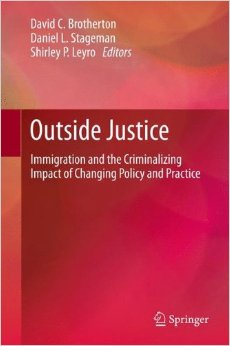
Outside Justice: Undocumented Immigrants and the Criminal Justice System fills a clear gap in the scholarly literature on the increasing conceptual overlap between popular perceptions of immigration and criminality, and its reflection in the increasing practical overlap between criminal justice and immigration control systems. Drawing on data from the United States and other nations, scholars from a range of academic disciplines examine the impact of these trends on the institutions, communities, and individuals that are experiencing them.
Individual entries address criminal victimization and labor exploitation of undocumented immigrant communities, the effects of parental detention and deportation on children remaining in destination countries, relations between immigrant communities and law enforcement agencies, and the responses of law enforcement agencies to drastic changes in immigration policy, among other topics. Taken as a whole, these essays chart the ongoing progression of social forces that will determine the well-being of Western democracies throughout the 21st century. In doing so, they set forth a research agenda for reexamining and challenging the goals of converging criminal justice and immigration control policy, and raise a number of carefully considered, ethical alternatives to the contemporary policy status quo.
Contemporary immigration is the focus of highly charged rhetoric and policy innovation, both attempting to define the movement of people across national borders as fundamentally an issue of criminal justice. This realignment has had profound effects on criminal justice policy and practice and immigration control alike, and raises far-reaching implications for social inclusion, labor economies, community cohesion, and a host of other areas of immediate interest to social science researchers and practitioners.
Click Here for Online Purchase Information
Profit Without Honor: White Collar Crime and the Looting of America (6th Edition)
Prentice Hall, 2013
Stephen M. Rosoff, Henry N. Pontell, and Robert Tillman
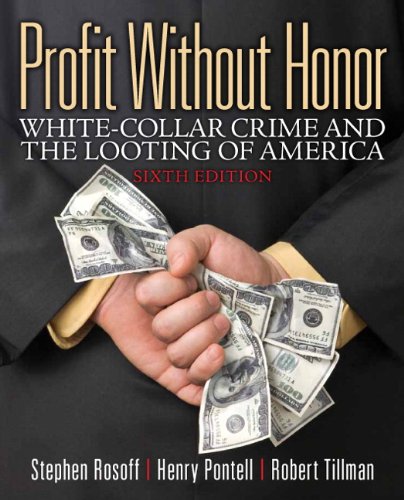
Profit Without Honor clearly exposes the battle between personal gain and individual integrity and provides a comprehensive overview of white-collar crime in American society. Presenting a vivid picture of all types of white-collar crime, the book covers high-profile cases, the latest trends in criminal activity, and a thorough discussion of the victims and consequences of these criminal behaviors. This edition addresses the recurrent financial meltdowns in recent years and the role of fraud and corporate crime in these crises. Utilizing both academic and popular sources, the book challenges readers to grasp the importance and long-term effects of white-collar crime in America.
Click Here for Online Purchase Information
Ethnography and the City: Readings on Doing Urban Fieldwork
Routledge, 2012
Richard E. Ocejo
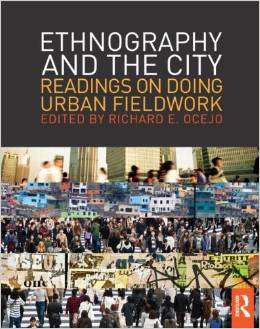
This book is the only collection of its kind on the market, gathering the work of some of the most esteemed urban ethnographers in sociology and anthropology. Broken down into sections that cover key aspects of ethnographic research, Ethnography and the City will expose readers to important works in the field, while also guiding students to the study of method as they embark on their own work.
"Ethnography and the City is an invaluable book for readers fascinated by city life, and for anyone planning to conduct original ethnographic research will become an essential text. Sociologist Richard Ocejo, himself a talented urban ethnographer, offers readers an outstanding set of classic and contemporary urban ethnographic essays, with original introductions that brilliantly highlight the personal, theoretical, and ethical challenges of the urban ethnographer’s science and craft." –William Kornblum, Sociology, Chair, Center for Urban Research, Graduate Center, City University of New York
"A strong, well-constructed volume of readings both classic and contemporary that will yield the careful reader great insight into the continued challenge of urban ethnography." –Gerardo Marti, Sociology, Davidson College
"This volume is a must-read for budding and seasoned urban ethnographers. Like no other reader, this collection of essays showcases four core themes that ethnographers must grapple with to successfully collect rich, compelling, and accurate data. For those teaching ethnography and qualitative methods, adding this volume to course readings will greatly enhance student mastery of this invaluable social science research method." –Derek S. Hyra, Urban Affairs and Planning, Virginia Tech
Click Here for Online Purchase Information
Finding Mecca in America: How Islam Is Becoming an American Religion
University Of Chicago Press, 2012
Mucahit Bilici
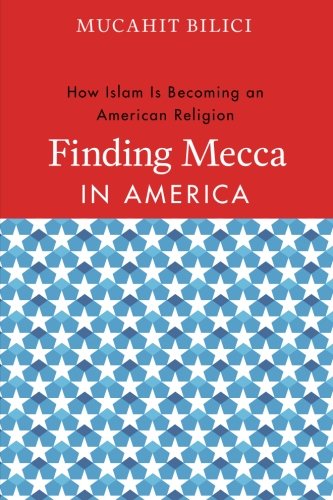
The events of 9/11 had a profound impact on American society, but they had an even more lasting effect on Muslims living in the United States. Once practically invisible, they suddenly found themselves overexposed. By describing how Islam in America began as a strange cultural object and is gradually sinking into familiarity, Finding Mecca in America illuminates the growing relationship between Islam and American culture as Muslims find a homeland in America. Rich in ethnographic detail, the book is an up-close account of how Islam takes its American shape. In this book, Mucahit Bilici traces American Muslims’ progress from outsiders to natives and from immigrants to citizens. Drawing on the philosophies of Simmel and Heidegger, Bilici develops a novel sociological approach and offers insights into the civil rights activities of Muslim Americans, their increasing efforts at interfaith dialogue, and the recent phenomenon of Muslim ethnic comedy. Theoretically sophisticated, Finding Mecca in America is both a portrait of American Islam and a groundbreaking study of what it means to feel at home.
"Bilici's theoretical acumen is reason enough to pick up the book -the range of sources from which he pulls is dazzling.. Like many sociological argument, Bilici's is quite indebted to Bourdieu, yet unlike virtually any contemporary American sociology, it's also indebted to Heidegger and Simmel... Yet just as important is his facility with Islamic social theory, which, for him, ceases to be simply a useful 'native category' in cataloging Muslims and becomes another series of tools -alongside American pragmatism- to describe how life works." –Jeff Guhin, Yale University, Contemporary Islam
"Interpretations of Muslim assimilation have gravitated between two arguments: that Muslims will remain as permanent outsiders or that Muslims will blend in with little difficulty at all. Mucahit Bilici demonstrates how wanting these arguments are. Finding Mecca in America takes us into the uncharted territory of what it is actually like to be Muslim immigrants in the United States. I am especially impressed by the study’s theoretical depth and empirical insights." –Robert Wuthnow author of America and the Challenges of Religious Diversity
"A work of considerable originality, Mucahit Bilici offers a well crafted and insightful analysis of the complex process of integration that Muslim immigrants face in the United States since 9/11. Bilici’s look at Islam as a religion in the American system is rich and rewarding." –José Casanova, Georgetown University
"A very insightful and important book that helps us think better about a badly understudied subject of immense importance, the meaning of Muslims in America. Bilici’s insights help to break through simplistic stereotypes and deepen our understanding of Islam in the United States, while expanding our imagination concerning the presences of minority religions in a Christian/secular nation." –Christian Smith, Center for the Study of Religion and Society, University of Notre Dame
"Finding Mecca in America weaves social theory and concrete ethnography into a significant contribution on Muslims in the United States, illuminating broader questions about the integration of minority and immigrant groups along the way. This is an important work and a joy to read." –Eboo Patel, President, Interfaith Youth Core and author of Sacred Ground
"Bilici provides important examples and analyses of ways in which Muslims in America are embedding themselves within society, becoming members of communities and responding to their collective challenges. The unique content, perspectives and experiences are presented in an accessible format making the text suitable for an upper undergraduate course." –Culture and Religion
Click Here for Online Purchase Information
How They Got Away With It: White Collar Criminals and the Financial Meltdown
Columbia University Press, 2012
Susan Will and David Brotherton
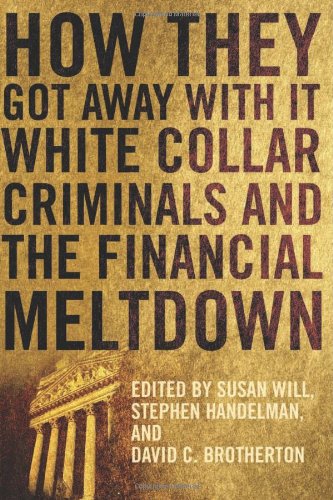
A team of scholars with backgrounds in criminology, sociology, economics, business, government regulation, and law examine the historical, social, and cultural causes of the 2008 economic crisis. How They Got Away With It probes the workings of the toxic subprime loan industry, the role of external auditors, the consequences of Wall Street deregulation, the manipulations of alpha hedge fund managers, and the "Ponzi-like" culture of contemporary capitalism. They unravel modern finance's complex schematics and highlight their susceptibility to corruption, fraud, and outright racketeering. They examine the involvement of enablers, including accountants, lawyers, credit rating agencies, and regulatory workers, who failed to protect the public interest and enforce existing checks and balances. While the United States was "ground zero" of the meltdown, the financial crimes of other countries intensified the disaster. Internationally-focused essays consider bad practices in China and the European property markets and draw attention to the far-reaching consequences of transnational money laundering and tax evasion schemes. By approaching the 2008 crisis from the perspective of white collar criminology, contributors build a more general understanding of the collapse and crystallize the multiple human and institutional factors preventing capture of even the worst offenders.
"We have clearly not learned the lessons of past financial debacles, a central one being that crime has played a significant role in them. Unlike traditional economic and legal analyses, this volume starts from the (correct) premise that criminal offending was a central phenomenon in the meltdown. Its contents provide diverse and penetrating analyses of how fraud occurred and how it might best be prevented. This work provides an excellent foundation for further academic research and needs to be on the desk of every legislator dealing with financial regulation." –Henry N. Pontell, University of California, Irvine, coauthor of Profit Without Honor: White-Collar Crime and the Looting of America
"Criminology failed the challenges of the global financial crisis. In this book, leading criminologists put this right by explaining impunity for the crimes of financial capitalism. It is rich with insight on how Wall Street games regulation. When Goldman Sachs takes fat fees to help Greece conceal its debt, is fraud involved? Are millions of unemployed Greeks victims of fraud? Are we all? What of Goldman Sachs then placing bets on the failure of the Greek economy? These are the questions considered in this important work." –John Braithwaite, Australian National University
"...this book is a valuable resource for details about the financial crisis." –Library Journal
Click Here for Online Purchase Information
The Russian Writer's Daughter
Mayapple Press, 2011
Lydia S. Rosner
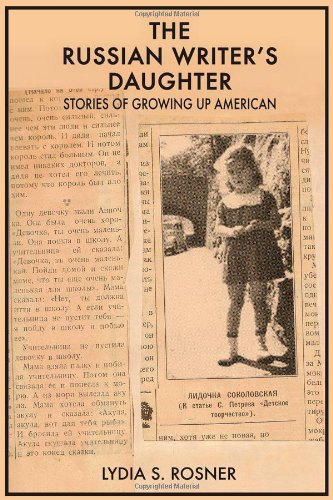
The Russian Writer's Daughter is a collection of lively autobiographical stories about growing up in a Russian-American Jewish household in the stifling political atmosphere of the Red Scare. At the center of these memories is Lyduce’s father, whose complex personality mixes a passion for social justice, the desire to protect his family, and intellectual snobbery. In this revelatory memoir, international politics shadow a child’s gradual awakening to the world around her. As she tells her family’s story, Rosner shows how complicated autobiography can be, more a matter of pursuing the truth than of asserting it.
Dr. Lydia S. Rosner, Professor Emeritus of Sociology, has been on the faculty at John Jay College of Criminal Justice, City University of New York, since 1985. Mentioned in Two Thousand Notable American Women, Who’s Who in America and Who’s Who in the East, Dr. Rosner has traveled the world with a keen interest in cultures and social structures.
Click Here for Online Purchase Information
Banished to the Homeland: Dominican Deportees and Their Stories of Exile
Columbia University Press, 2011
David C. Brotherton and Luis Barrios
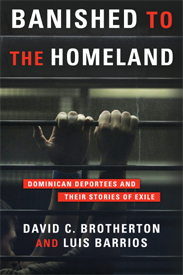
The 1996 U.S. Immigration Reform and Responsibility Act has led to the forcible deportation of tens of thousands of Dominicans from the United States. Following thousands of these individuals over a seven-year period, David C. Brotherton and Luis Barrios use a unique combination of sociological and criminological reasoning to isolate the forces that motivate emigrants to leave their homeland and then commit crimes in the Unites States violating the very terms of their stay. Housed in urban landscapes rife with gangs, drugs, and tenuous working conditions, these individuals, the authors find, repeatedly play out a tragic scenario, influenced by long-standing historical injustices, punitive politics, and increasingly conservative attitudes undermining basic human rights and freedoms.
Brotherton and Barrios conclude that a simultaneous process of cultural inclusion and socioeconomic exclusion best explains the trajectory of emigration, settlement, and rejection, and they mark in the behavior of deportees the contradictory effects of dependency and colonialism: the seductive draw of capitalism typified by the American dream versus the material needs of immigrant life; the interests of an elite security state versus the desires of immigrant workers and families to succeed; and the ambitions of the Latino community versus the political realities of those designing crime and immigration laws, which disadvantage poor and vulnerable populations. Filled with riveting life stories and uncommon ethnographic research, this volume relates the modern deportee's journey to broader theoretical studies in transnationalism, assimilation, and social control.
Click Here for Online Purchase Information
Routledge Handbook of International Criminology
Routledge, 2011
Cindy J. Smith, Sheldon X. Zhang, and Rosemary Barberet
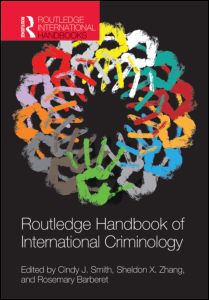
The Routledge Handbook of International Criminology brings together the latest thinking and findings from a diverse group of both senior and promising young scholars from around the globe. This collaborative project articulates a new way of thinking about criminology that extends existing perspectives in understanding crime and social control across borders, jurisdictions, and cultures, and facilitates the development of an overarching framework that is truly international.
The book is divided into three parts, in which three distinct yet overlapping types of crime are analyzed: international crime, transnational crime, and national crime. Each of these perspectives is then articulated through a number of chapters which cover theory and methods, international and transnational crime analyses, and case studies of criminology and criminal justice in relevant nations. In addition, questions placed at the end of each chapter encourage greater reflection on the issues raised, and will encourage young scholars to move the field of inquiry forward.
This handbook is an excellent reference tool for undergraduate and graduate students with particular interests in research methods, international criminology, and making comparisons across countries.
Click Here for Online Purchase Information
The State of Sex: Tourism, Sex, and Sin in the New American Heartland
Routledge, 2010
Barbara G. Brents, Crystal A. Jackson, and Kathryn Hausbeck
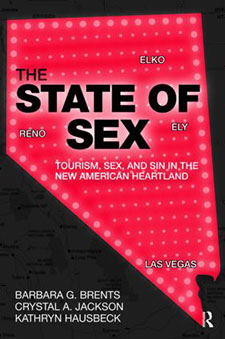
The State of Sex is a study of Nevada’s brothels, the nation's only legal prostitution industry. Drawing on theories of political economy and contemporary tourism, the authors situate Nevada within the "new American heartland," as the state’s pastimes, people, and politics have become more central to the nation. The rise of a service and leisure economy over the past sixty years has propelled sexuality into the heart of contemporary markets. Yet, neoliberal laws in the United States promote business but limit sexual commerce.
How have Nevada's legal brothels survived, while the rest of the country criminalizes the sale of sex? How do brothels operate? Who works in them? This book brings social theory on globalizing economies, politics, leisure consumption, and emotional labor in interactive service work together with research on contemporary prostitution and sexual commerce. The authors employ an innovative, multi-method sociological approach, combining historical analysis of how the brothels came to be with over a decade's worth of ethnographic research on the current state of the industry.
Click Here for Online Purchase Information
Who You Claim: Performing Gang Identity in School and on The Streets
New York University Press, 2010
Robert Garot
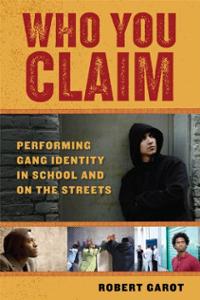
The color of clothing, the width of shoe laces, a pierced ear, certain brands of sneakers, the braiding of hair and many other features have long been seen as indicators of gang involvement. But it’s not just what is worn, it’s how: a hat tilted to the left or right, creases in pants, an ironed shirt not tucked in, baggy pants. For those who live in inner cities with a heavy gang presence, such highly stylized rules are not simply about fashion, but markers of "who you claim," that is, who one affiliates with, and how one wishes to be seen.
In this carefully researched ethnographic account, Robert Garot provides rich descriptions and compelling stories to demonstrate that gang identity is a carefully coordinated performance with many nuanced rules of style and presentation, and that gangs, like any other group or institution, must be constantly performed into being. Garot spent four years in and around one inner city alternative school in Southern California, conducting interviews and hanging out with students, teachers, and administrators. He shows that these young people are not simply scary thugs who always have been and always will be violent criminals, but that they constantly modulate ways of talking, walking, dressing, writing graffiti, wearing make-up, and hiding or revealing tattoos as ways to play with markers of identity. They obscure, reveal, and provide contradictory signals on a continuum, moving into, through, and out of gang affiliations as they mature, drop out, or graduate. Who You Claim provides a rare look into young people’s understandings of the meanings and contexts in which the magic of such identity work is made manifest.
"[A] beautifully complex picture of youth identity….Who You Claim is a ‘must-read’ for scholars interested not just in gangs, but also in youth identity, education, urban neighborhoods, and violence more generally." –Andrew V. Papachristos, Contemporary Sociology
"Garot has provided deep insight into an inner‒city alternative school showing how self identity can change and adjust to the surrounding circumstances and why gang identity is a variable that defies a fixed characterization." –Diego Vigil, author of The Projects: Gang and Non‒Gang Families in East Los Angeles
"Garot should be commended for his well-written, exceptionally insightful school ethnography... I teach graduate courses on cultural differences and educational research, and plan to use this book as an example of how to design, execute, and present exemplary research, and most importantly, how to represent historically marginalized young people accurately, ethically, and in a manner that reveals their humanity in dehumanizing circumstances." –Annette Hemmings, Teachers College Record
"I cannot recommend this book enough. I should add that it is highly readable at undergraduate levels. They should make it mandatory reading for criminologists and law enforcement members." –Global Sociology Blog
"Path breaking and precedent-setting. Robert Garot has appreciated what no one has before, the essential shadow quality of urban gangs, which are not so much things one can be in as they are things danced around, avoided, played with, and very occasionally, practically invoked." –Jack Katz, author of How Emotions Work
"Written with the ink of theory, passion, fine attention to method and ethics, Garot represents with dignity the complex and strategic maneuverings of youth in gangs as he represents with humility the equally complex negotiations of a white guy ethnographer working with, for and beside urban youth.” –Michelle Fine, co-author of Silenced Voices and Extraordinary Conversations: Re-Imagining Schools
Click Here for Online Purchase Information
Through Our Eyes: African American Men's Experiences of Race, Gender, and Violence
Rutgers University Press, 2010
Gail Garfield
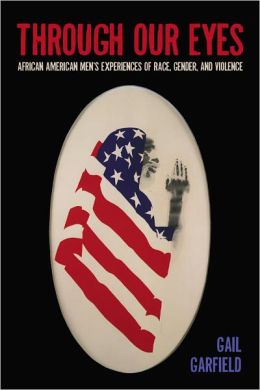
How have African American men interpreted and what meaning have they given to social conditions that position them as the primary perpetrators of violence? How has this shaped the ways they see themselves and engaged the world? Through Our Eyes provides a view of black men’s experiences that challenges scholars, policy makers, practitioners, advocates, and students to grapple with the reality of race, gender, and violence in America.This multi-level analysis explores the chronological life histories of eight black men from the aftermath of World War II through the Cold War and into today. Gail Garfield identifies the locations, impact, and implications of the physical, personal, and social violence that enters the lives of African American men. She addresses questions critical to understanding how race, gender, and violence are insinuated into black men’s everyday lives and how experiences are constructed, reconstructed, and interpreted. By appreciating the significance of how African American men live through what it means to be black and male in America, this book envisions the complicated dynamics that devalue their lives, those of their family, and society.
"Through Our Eyes provides detailed examinations of the plight of African American men and youth. Garfield analyzes the effects of racism, gender roles, and violence on African American men. This book is a welcome addition to the growing body of literature that investigates the impacts of racism, sexism, and violence on African American men and youth." –Journal of African American History
"A poignant, insightful glimpse into what it means to be black and male." –Choice
"Garfield lays the foundation for a more nuanced way of thinking about African American masculinity. The book succeeds by showing readers that masculinity is not static, and that history and personal stories can help us to understand the often overlooked and misunderstood, everchanging African American male." –Contemporary Sociology
"This insightful book lends depth and intimacy to the examination of violence in the everyday lives of African American men. Garfield delves into the motivations and reactions of these men, challenging stereotypes and creating a humanistic portrait of these individuals." –Alford A. Young, Jr. University of Michigan, Ann Arbor
Click Here for Online Purchase Information
Fifty Key Thinkers in Criminology
Routledge, 2009
Keith Hayward, and Shadd Maruna, and Jayne Mooney
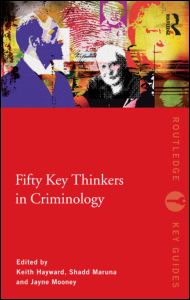
Fifty Key Thinkers in Criminology brings the history of criminological thought alive through a collection of fascinating life stories. The book covers a range of historical and contemporary thinkers from around the world, offering a stimulating combination of biographical fact with historical and cultural context. A rich mix of life-and-times detail and theoretical reflection is designed to generate further discussion on some of the key contributions that have shaped the field of criminology. Featured profiles include:
- Cesare Beccaria
- Nils Christie
- Albert Cohen
- Carol Smart
- W. E. B. DuBois
- John Braithwaite
Fifty Key Thinkers in Criminology is an accessible and informative guide that includes helpful cross-referencing and suggestions for further reading. It is of value to all students of criminology and of interest to those in related disciplines, such as sociology and criminal justice.
"...places a human face on the study of criminology through thoughtful "intellectual biographies" of the discipline's top international theorists from the 18th through the late 20th century. The theoreticians emerge as groundbreaking human beings in six-page essays written by a distinguished group of 54 contributors drawn from the ranks of an international faculty of criminologists, sociologists, and historians. What emerges…is an invaluable work." –D.K. Frasier, Indiana University- Bloomington, USA
Click Here for Online Purchase Information
When Children Kill Children: Penal Populism And Political Culture
Oxford University Press, 2008
David A. Green

Winner of the 2009 British Society of Criminology Book Prize
The book explores the reasons underlying the vastly differing responses of the English and Norwegian criminal justice systems to the cases of James Bulger and Silje Redergard respectively. James Bulger's killers were subject to extreme press and public hostility, held in secure detention for nine months and tried in an adversarial court. Redergard's killers were shielded from public antagonism and carefully reintegrated into the local community. This book argues that English adversarial political culture creates far more incentives to politicize high-profile crimes than Norwegian consensus political culture. Drawing on a wealth of empirical research, Green suggests that the tendency for politicians to justify punitive responses to crime by invoking harsh political attitudes is based upon a flawed understanding of public opinion. The book proposes a more deliberative response to crime that accommodates the informed public in news ways - ways that might help build social capital and remove incentives for cynical penal populism.
"Many people talk of the need for comparative method in criminology, few have attempted it and even fewer contribute so imaginatively to the forefront of scholarship as does David Green in this study. Here we have comparison placed in the contrasting contexts of English and Norwegian politics and media with clear and innovative policy implications; incisive theory informing future practice." –Jock Young, Distinguished Professor, Graduate Center, City University of New York. Author of The Criminological Imagination
"A master class in comparative criminology, this study proves there is an alternative to demonization in response to child-on-child homicide." –David Downes, Mannheim Centre for Criminology, London School of Economics
"David Green uses comparative analysis of two high-profile child-on-child homicides to explore the complex interconnections between media processes, public opinion and political culture. It would be impressive enough to achieve Green’s analytical sophistication in just one of these areas. The extraordinary achievement of When Children Kill Children is to demonstrate theoretical and empirical sophistication, resulting in compelling and cogent analysis, across all three. A remarkable feat of critical scholarship. A genuinely enlightening book." –Chris Greer, City University London
"this important, stimulating book has the potential to become a landmark contribution to the development of comparative penology." –John Pratt, Punishment and Society
"a most valuable and informative work which provides new insights and ways forward in the face of the destructive potentialities of penal populism." –Dennis Eady, Criminology and Criminal Justice
Click Here for Online Purchase Information
Keeping Out the Other: A Critical Introduction to Immigration Enforcement Today
Columbia University Press, 2008
David C. Brotherton and Philip Kretsedemas
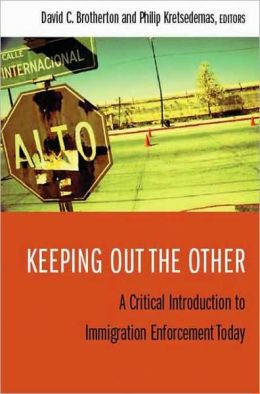
America's reputation for open immigration has always been accompanied by a desire to remove or discourage the migration of "undesirables." But recent restrictions placed on immigrants, along with an increase in detentions and deportations, point to a more worrying trend. Immigration enforcement has become the fastest growing sector for spending over the past two decades, dwarfing the money spent on helping immigrants adjust to their new lives. Instead of finding effective ways of integrating newcomers into American society, the United States is focusing on making the process of citizenship more difficult, provoking major protests and unrest.
David C. Brotherton and Philip Kretsedemas provide a history and analysis of recent immigration enforcement in the United States, demonstrating that our current anti-immigration tendencies are not a knee-jerk reaction to the events of September 11. Rather, they have been gathering steam for decades. With contributions from social scientists, policy analysts, legal experts, community organizers, and journalists, the volume critically examines the discourse that has framed the question of immigration enforcement for the general public. It also explores the politics and practice of deportation, new forms of immigrant profiling, relevant case law, and antiterrorist operations. Some contributors couch their critiques in an appeal to constitutional law and the defense of civil liberties. Others draw on the theories of structural inequality and institutional discrimination. These diverse perspectives stimulate new ways of thinking about the issue of immigration enforcement, proving that "security" has more to do with improving legal rights, social mobility, and the well-being of all U.S. residents than keeping out the "other."
Click Here for Online Purchase Information
Globalizing the Streets: Cross-Cultural Perspectives on Youth, Social Control, and Empowerment
Columbia University Press, 2008
Michael Flynn and David C. Brotherton
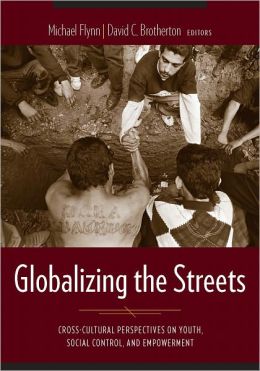
Not since the 1960s have the activities of resistance among lower- and working-class youth caused such anxiety in the international community. Yet today the dispossessed are responding to the challenges of globalization and its methods of social control. The contributors to this volume examine the struggle for identity and interdependence of these youth, their clashes with law enforcement and criminal codes, their fight for social, political, and cultural capital, and their efforts to achieve recognition and empowerment. Essays adopt the vantage point of those whose struggle for social solidarity, self-respect, and survival in criminalized or marginalized spaces. In doing so, they contextualize and humanize the seemingly senseless actions of these youths, who make visible the class contradictions, social exclusion, and rituals of psychological humiliation that permeate their everyday lives.
"Globalizing the Streets makes the compelling case that marginalized young people all over the world are being drawn to the culture of the streets. The volume shows that these youths are searching for identity, meaning, fellowship, security, a measure of excitement and joy, and a way of coping with a global social order that seems no longer to have a place for them. A very important and powerful work." –Kai Erikson, William R. Kenan Jr. Professor Emeritus of Sociology and American Studies, Yale University
"This extremely timely work offers an approach to the youth crisis based on the rich, largely untapped potential of those in the margins wherever they may be found. In doing so, the authors firmly reject the usual pathologizing frames of reference within which our kids are most often located. A great book for students of resistance and activists alike." –Tom Hayden, former California state senator and author of Street Wars: Gangs and the Future of Violence
"This is the book on youth we have all been waiting for: international in its orbit and interdisciplinary in its research, it combines feisty theory with grass roots ethnography backed up by creative politics. It places today's youth firmly in a transnational perspective roundly debunking and dismissing stereotypes in a world of continuous moral panics about young people and the demonization of street gangs in particular. If you have any interest or concern about what is going on in the streets of our big cities, in the real world outside of the tabloid press, read this book." –Jock Young, University of Kent, author of The Vertigo of Late Modernity
Click Here for Online Purchase Information
Encyclopedia of Gangs
Greenwood, 2007
David C. Brotherton and Lou Kontos
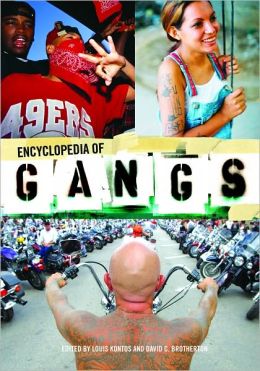
In light of Los Angeles' gang state of emergency, ethnic and minority gangs are arguably more high profile now than at any other time in our history. News media typically focus on the crime and violence associated with gangs, but not much else. This encyclopedia seeks to illuminate the world of gangs, including gang formations, routine gang activities, aberrations and current developments. One hundred essay entries related to gangs in the United States and worldwide provide a diffuse overview of the gang phenomenon. Each entry defines and explains the term, provides an historical overview, and explains its significance today. As the following entries demonstrate, gangs are part of the fabric of American society. They are not only in our communities but also our schools and other social institutions. Understanding the world of gangs is therefore needed to understand American society.
Entries include: Bikers, Bloods, Cholas, Crips, gang mythology, gang warfare, graffiti, Hell's Angels, Hong Kong Triads, Latin Kings, law enforcement, occultic gangs, mafia, media, prison gangs, rites, Skinheads, Streetgang Terrorism Omnibus Prevention Act, tattoos, trafficking, Wanna-bes, West Side Story, Witness Protection programs, and youth gangs.
Click Here for Online Purchase Information
New York Murder Mystery: The True Story Behind the Crime Crash of the 1990s
New York University Press, 2006
Andrew Karmen
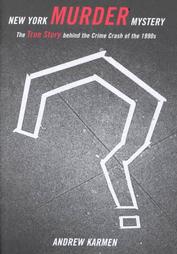
Andrew Karmen tracks a quarter century of murder in the city Americans have most commonly associated with rampant street crime. Providing both a local and a national context for New York's plunging crime rate, Karmen tests and debunks the many self-serving explanations for the decline. While crediting a more effective police force for its efforts, Karmen also emphasizes the decline of the crack epidemic, skyrocketing incarceration rates, favorable demographic trends, a healthy economy, an influx of hard working and law abiding immigrants, a rise in college enrollment, and an unexpected outbreak of improved behavior by young men growing up in poverty stricken neighborhoods. New York Murder Mystery is the most authoritative study to date of why crime rates rise and fall.
"Systematically debunks popularly accepted reasons for the crime crash by wedding closely analyzed statistical data with common sense and historical precedent. . . . After reading this book, one thing becomes certain: today's New York isn't what it used to be." –Villager
"New York Murder Mystery is long overdue. It provides a well-written, illuminating analysis of an issue often subject to self-serving and simplistic sound-bites. Guided by Karmen’s thoughtful and thorough presentation, we come to understand all the factors contributing to the last decade's crime drop. We learn to credit not only new police tactics, demographics declines, and a prosperous economy but also the many thousands of youth who practiced wisdom and discipline in avoiding the self-defeating behavior patterns of their older friends and relatives."
–Robert Gangi, Executive Director, The Correctional Association
"Karmen has written a book that anyone interested in the New York City crime story should read. Nobody has written about the NYC drop in crime more comprehensively or more even-handedly. This book assesses a complicated story with an air of confidence and produces a convincing analysis. Those who think they already know the story are bound to be surprised by what they read here, and those who want to draw policy conclusions for New York's experience will find Karmen’s reliable analysis helps them avoid some of the pitfalls in the cyclical fads of criminal justice reform." –Todd R. Clear, President of the Academy of Criminal Justice Sciences
"With this elegant sweep, the author has parted the curtain to reveal a gaseous windbag behind the bombast attending the miraculous claims of today's wizards. Bravo." –Tony Bouza, Law Enforcement News
Click Here for Online Purchase Information
Knowing What We Know: African American Women's Experiences of Violence and Violation
Rutgers University Press, 2005
Gail Garfield
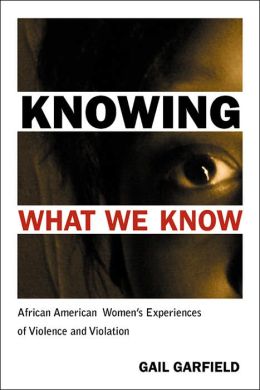
In recent years there has been an attempt by activists, service providers, and feminists to think about violence against women in more inclusive ways. In Knowing What We Know, activist and sociologist Gail Garfield argues that this effort has not gone far enough and that in order to understand violence, we must take the lived experiences of African American women seriously. Doing so, she cautions, goes far beyond simply adding voices of black women to existing academic and activist discourses, but rather, requires a radical shift in our knowledge of these women’s lives and the rhetoric used to describe them.
Bringing together a series of life-history interviews with nine women, this unique study urges a departure from established approaches that position women as victims of exclusively male violence. Instead, Garfield explores what happens when women’s ability to make decisions and act upon those choices comes into conflict with cultural and social constraints. Chapters explore how women experience racialized or class-based violence, how these forms of violence are related to gendered violence, and what these violations mean to a woman’s sense of identity. By showing how women maintain, sustain, and in some instances regain their sense of human worth as a result of their experiences of violation, Garfield complicates the existing dialogue on violence against women in new and important ways.
Knowing What We Know offers readers a rare and valuable opportunity to travel with African American women as they move through the emotional and bureaucratic maze that surrounds their experiences of violence and victimization." –Beth E. Richie, author of Compelled to Crime
"This work makes a distinctive contribution to the feminist literature on violence against women. The author includes riveting accounts about the lives of nine African American women and emphasizes differing forms of ‘violation and violence’ that they have experienced." –Traci West, author of Wounds of the Spirit: Black Women, Violence, and Resistance Ethics
Click Here for Online Purchase Information
Identity and the Natural Environment: The Psychological Significance of Nature
MIT Press, 2003
Susan Clayton and Susan Opotow

The often impassioned nature of environmental conflicts can be attributed to the fact that they are bound up with our sense of personal and social identity. Environmental identity—how we orient ourselves to the natural world—leads us to personalize abstract global issues and take action (or not) according to our sense of who we are. We may know about the greenhouse effect—but can we give up our SUV for a more fuel-efficient car? Understanding this psychological connection can lead to more effective pro-environmental policymaking.
Identity and the Natural Environment examines the ways in which our sense of who we are affects our relationship with nature, and vice versa. This book brings together cutting-edge work on the topic of identity and the environment, sampling the variety and energy of this emerging field but also placing it within a descriptive framework. These theory-based, empirical studies locate environmental identity on a continuum of social influence, and the book is divided into three sections reflecting minimal, moderate, or strong social influence. Throughout, the contributors focus on the interplay between social and environmental forces; as one local activist says, "We don't know if we're organizing communities to plant trees, or planting trees to organize communities."
"Identity and the Natural Environment is a fascinating book on many levels, dealing with topics of the utmost importance for our future well-being—even our survival as a species. It does so by pioneering a host of new research approaches, and presents the findings in ways that are interesting and accessible, yet rigorous. It represents a wonderful perspective that ushers in a new domain in the social sciences." –Mihaly Csikszentmihalyi, Claremont Graduate University, and author of Flow: The Psychology of Optimal Experience
"Anyone interested in how people come to identify with the natural environment and how such identification in turn affects behavior must read this book. It reports a fascinating set of studies, employing a range of methods applied to diverse populations, that provide rich insights into the antecedents and consequences of environmental/ecological identification." –Riley E. Dunlap, Donner Professor, Åbo Akademi University
"Identity and the Natural Environment is a superb anthology of interdisciplinary research, conceptually organized to get to the heart of a crucial question: how are ecological awareness and activism linked to core identity?" –Mitchell S. Thomashow, Chair, Department of Environmental Studies, Antioch New England Graduate School, author of Bringing the Biosphere Home and Ecological Identity
Click Here for Online Purchase Information
Gangs and Society
Columbia University Press, 2003
Louis Kontos, David Brotherton, and Luis Barrios
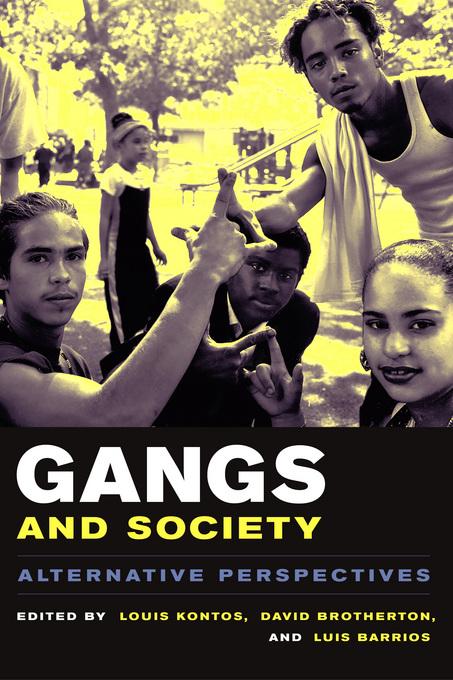
Compiled by three leading experts in the psychological, sociological, and criminal justice fields, this volume addresses timely questions from an eclectic range of positions. The product of a landmark conference on gangs, Gangs and Society brings together the work of academics, activists, and community leaders to examine the many functions and faces of gangs today. Analyzing the spread of gangs from New York to Texas to the West Coast, the book covers such topics as the spirituality of gangs, the place of women in gang culture, and the effect on gangs of a variety of educational programs and services for at-risk youth. The final chapter examines the "gang-photography phenomenon" by looking at the functions and politics of different approaches to gang photography and features a photographic essay by Donna DeCesare, an award-winning journalist.
"From the Jets to the Bloods to the Latin Kings, gangs have long symbolized the roughest parts of urban America. Still, argues this collection of essays, crime and theft are just a part of what fuels their existence; gangs' roles in communities is far more complex." –City Limits
"A refreshing anthology on gang life in the US. The editors have compiled fascinating, serious, and informative articles concerned with the theoretical and methodological contexts of gang research, women and gangs, links between gangs and politics, the problems of youth and gang life, and the social control of gangs... An excellent, very readable source. Highly recommended." –Choice
"The popular image that depicts gangs as nothing more than criminal enterprises is too restrictive a picture. Gangs and Society moves beyond this tradition and instead represents an important advancement in understanding the role gangs play in some urban communities.... this work is certainly a meaningful addition to the existing gang literature." –Sean P. Varano, Contemporary Sociology
"Finally! A solidly researched book that challenges the conservative academic dogma of gang members as incorrigible superpredators.... May this book provoke a great rethinking of all that is amiss in our society today." –Tom Hayden, Professor at Occidental College and former California state senator
"The book's editors...do a remarkable job of highlighting the economic, political, social and cultural factors that impact the activities of gangs." –Matthew T. Theriot, Journal of Sociology and Social Welfare
Click Here for Online Purchase Information
Gender, Violence and the Social Order
Palgrave Macmillan, 2000
Jayne Mooney
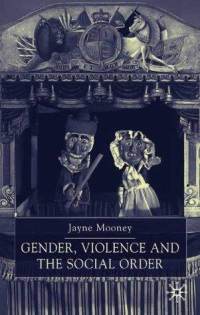
This is an exciting and innovative book which provides a thorough introduction to contemporary social theory by examining the way in which the widespread existence of violence against women is explored. A wide range of theories from liberalism to evolutionary psychology are considered culminating in the development of a distinctive feminist realist position. The theories discussed are tested against a large-scale survey, the findings of which challenge many conventional wisdoms as to the patterning of violence in contemporary society.
"...will make a fundamental and longlasting impact on the direction of research and policy making." –Professor Sandra Walklate, Manchester Metropolitan University
'...well written, provocative...' –Kate Cavanagh, Contemporary Sociology